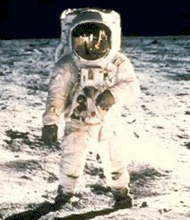

|
S.P.S.E. The Space and Planetary Science and Engineering Area of Special Interest At the Colorado School of Mines |
|
Launch to... Home Program People Classes  News Links Summer Intern Contact |
SPSE Classes EPICS 251 Planetary EPICS Design II Engineering design... with a space and planetary theme! EPICS 251 GIS EPICS Design II Can be used for the SPSE-ASI only if a planetary project is chosen EGGN 408 Introduction to Space Exploration (Fall) A survey course covering a wide range of topics relating to space exploration. Includes guest lectures from scientists, engineers, and even an astronaut! EGGN 491/492 Senior Design I and II Can be used for the SPSE-ASI only if a planetary project is chosen GEGN 469 Engineering Geology Design Can be used for the SPSE-ASI only if a planetary project is chosen GEOL 410 Planetary Geology (Spring) An introduction for students interested in planetary exploration to the basic geology, geologic history, and natural resources of the Earth's Moon, Mars, Venus, and Mercury. The course will focus on landscape evolution, geologic and atmospheric processes, rock and mineral resource types and distribution as they relate to the needs of long-term human exploration and habitation of the Moon and Mars. GPGN 438 Geophysics Project Design Can be used for the SPSE-ASI only if a planetary project is chosen GPGN/GEOL 470 Applications of Satellite Remote Sensing (Spring) This course focuses on remote sensing of both the Earth and planets from satellites. Lectures introduce the various techniques of satellite-based remote sensing, including imaging, spectroscopy, radar, and altimetry. Labs teach the students how to access and analyze various data sets for use in Earth and planetary science. GPGN 475 Planetary Geophysics and Geology (Fall) This class will provide an overview of the basic properties of the surfaces and interiors of the planets and moons in our solar system, and then go on to ask both how the planets differ and why. Simply put, this class will look at what makes the planets tick. The focus will be on both the terrestrial planets (Mercury, Venus, Earth, the Moon, and Mars) and the icy moons in the outer solar system. The overarching goal will be to develop a quantitative understanding of the basic processes that drive the evolution of the surfaces and interiors of the planets. PHGN 324 Introduction to Astronomy and Astrophysics (Spring) II) Celestial mechanics; Kepler’s laws and gravitation; solar system and its contents; electromagnetic radiation and matter; stars: distances, magnitudes, spectral classification, structure, and evolution. Variable and unusual stars, pulsars and neutron stars, supernovae, black holes, and models of the origin and evolution of the universe. PHGN 424 Astrophysics A survey of fundamental aspects of astrophysical phenomena, concentrating on measurements of basic stellar properties such as distance, luminosity, spectral classification, mass, and radii. Simple models of stellar structure evolution and the associated nuclear processes as sources of energy and nucleosynthesis. Introduction to cosmology and physics of standard big-bang models. PHGN 471/481 and 472/482 Senior Design Principles/Practice I and II Can be used for the SPSE-ASI only if a planetary project is chosen |